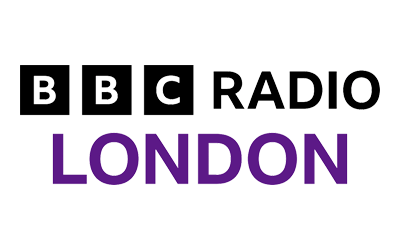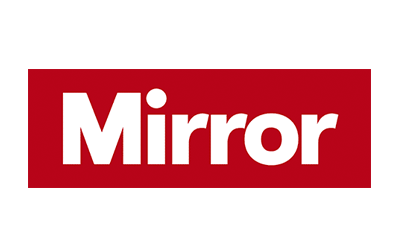According to the most recent cosmetic surgery figures from the British Association of Aesthetic Plastic Surgeons, breast augmentation once again is the most popular procedure in the UK and was up 67 % from the previous year’s figures.
The desire for fuller and more shapely breasts has led many women to explore fat transfer to the breasts alongside the conventional approach of using breast implants. Both methods aim to enhance breast size and shape, but they differ significantly in their approach.
In our Karidis Clinic guide to breast enhancement options, we will look at what these procedures entail, explore the differences between breast implants and breast fat transfer, discuss their respective benefits, and help you determine which option might be best suited to your needs.
What does a breast implant procedure involve?
Breast implant surgery, also known as breast augmentation, involves the insertion of implants into the breast tissue. During your consultation with your Karidis Clinic breast surgeon, they will discuss your goals and expectations, help you choose the appropriate implant size and type, and provide you with information about the procedure so you can make an informed choice about whether to proceed.
The procedure is performed under general anaesthesia at the Hospital of St John & St Elizabeth, one of London’s leading private hospitals, and you will stay overnight after your operation.
An incision is usually made in one of three locations – under the breast, around the areola, or in the armpit. The inframammary incision under the breast is often the preferred incision as it gives immediate access to the space where the implant will be placed. It is possible to create the size and shape of the pocket very accurately for the implant, as well as carefully control the position of the implant within that pocket.
Your surgeon will then insert the implant into a pocket created either under the breast tissue (subglandular) or beneath the chest muscle (submuscular). The incisions are then closed with sutures, and the recovery process begins.
What does a breast fat transfer procedure involve?
Breast fat transfer surgery, also known as autologous fat transfer or lipofilling, involves harvesting fat from one part of your body and injecting it into the breasts. Similar to breast implant surgery, you’ll start with a consultation to discuss your goals and expectations. Our breast specialist, Mr Mark Ho-Asjoe, will also determine if you have enough donor fat for the procedure.
In the operating room, Mr Ho-Asjoe will perform liposuction to remove fat from areas like the abdomen, thighs, or flanks. This fat is carefully processed and purified to prepare it for injection. The refined fat is then injected into the breasts through small, strategically placed incisions. Mr Ho-Asjoe will then sculpt the breasts to achieve the desired size and shape. After the fat transfer is complete, the incisions are closed.
What’s the difference between breast implants and breast fat transfer?
The primary differences between breast implants and breast fat transfer lie in the materials used, incisions, and the results they offer:
- Materials: Breast implants involve the use of silicone or saline implants, while breast fat transfer uses the patient’s own body fat.
- Incisions: Implant surgery requires larger incisions to accommodate the implant, whereas fat transfer involves small incisions for liposuction and injection points.
- Results: Breast implants provide a more predictable and long-lasting increase in breast size. Fat transfer yields a more natural look and feel. The body will reabsorb some of the transferred fat, but the fat that successfully grafts in the breast should remain there permanently.
What are the benefits of breast implants?
Breast implants have their advantages, which make them a suitable choice for many women:
- Size control: You have greater control over the size and shape of your breasts with implants, and you can achieve significant size increases.
- Long-lasting results: Implants generally provide more durable results compared to fat transfer.
- Predictability: The outcomes of implant surgery are more predictable, allowing you to achieve specific aesthetic goals.
- Bespoke surgery: Different implant types, shapes, and profiles are available, providing you with a range of customisation options.
What are the benefits of breast fat transfer?
Breast fat transfer has its unique benefits:
- Natural look and feel: Fat transfer results in breasts that feel and look more natural because they use your body’s own fat.
- Liposuction benefits: You can benefit from liposuction in areas where you have excess fat, leading to a more sculpted body overall.
- Minimally invasive: Fat transfer requires smaller incisions, resulting in less scarring and a quicker recovery compared to breast implant surgery.
- Kinder to your body: Although the latest generation breast implants are safer than ever, implants do involve certain risks relating to the body’s natural response to an artificial substance. With fat transfer, there is no risk of implant rupture or silicone leakage since the procedure uses your body’s natural fat.
How can you decide if implants or a fat transfer is best for you?
Choosing between breast implants and fat transfer is a personal decision that depends on your individual goals and preferences. Here are some factors to consider:
- Desired outcome: If you’re looking for a significant increase in breast size, breast implants may be a better option.
- Naturalness: If you prioritise a more natural look and feel, fat transfer might be the right choice.
- Body fat availability: To undergo fat transfer, you need to have sufficient donor fat available for liposuction.
- Scarring: Consider your scarring preferences, as breast implants typically result in more extensive incisions and more visible scars.
- Longevity: Think about how long you want the results to last. Implants offer more predictable outcomes, but thanks to recent advances in technique and technology, fat transfer is now more predictable.
Both breast implants and breast fat transfer offer distinct advantages, and the choice between them should align with your unique preferences, body type, and aesthetic goals. Ultimately, your consultation is critical to making this decision. Your Karidis Clinic surgeon can offer unbiased, expert advice on the most appropriate procedure to achieve the desired outcome. Call 0207 432 8727 to book a consultation.
















